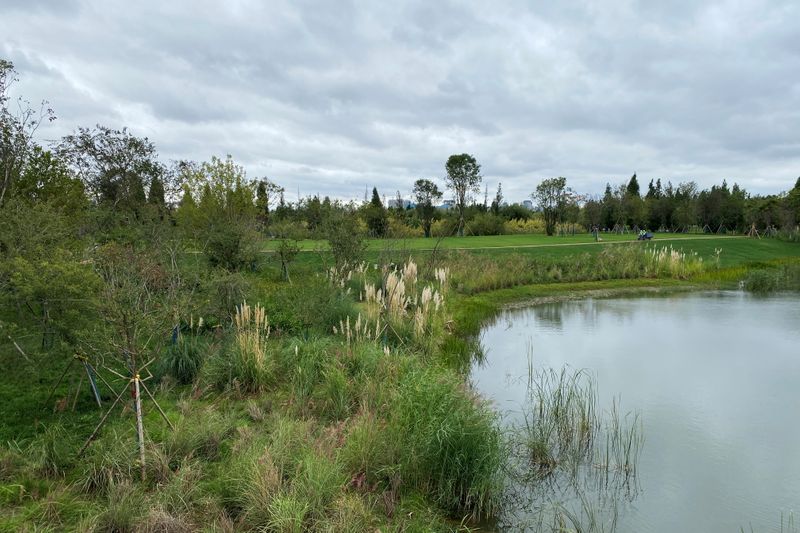By David Stanway
KUNMING, China (Reuters) - China used a five-day United Nations biodiversity conference in Kunming to celebrate its achievements in protecting habitats and improving its environmental record. Despite progress, a rift remains between rhetoric and reality.
During talks to secure a global post-2020 pact to reverse species loss in the capital city of southwest China's Yunnan province last week, President Xi Jinping announced the launch of a new 1.5 billion yuan ($233 million) biodiversity fund as well as a beefed-up national park scheme.
"China is sticking to an ecology-first path for green development and has already made remarkable achievements," Vice-Premier Han Zheng said. The government would now put biodiversity at the heart of political and economic decision-making, he said.
Yunnan province itself is promising to reverse damage done to its fragile local ecosystems over the last four decades, starting at Dianchi, a 300-square kilometre freshwater lake - one of China's biggest - located within a mile of the Kunming conference centre.
A decade of efforts and billions of dollars of spending at Dianchi have already seen the construction of 28 wastewater treatment plants handling more than 2 million tonnes of sewage a day. Wetland parks have been established, and polluted feeder rivers along the lake have been rehabilitated.
But though water quality has been raised from "below grade V", meaning not even suitable for industrial use, it remains at grade IV - still severely polluted and hazardous to humans. Yunnan province officials could not provide a date for when it would be upgraded further. Scientists said decades of untreated industrial and household waste had ruined the ecosystem.
"Of course our target is to make the water better and better but scientifically speaking, in the short term it is going to be hard to get to grade III," said Huang Yuhong, vice-principal of a local research institute dedicated to protecting the lake.
China divides water quality into five grades, with grade III suitable for human contact and drinking.
The central government has accused local authorities of failing to develop a "clear understanding of the fragile and sensitive reality" of the local environment.
A central government inspection team said in July that the "ecological space" around Dianchi was being "severely squeezed". It also accused local real estate developers of turning the protected zone of Changyao Mountain, located on the southeast edge of the lake, into a "cement mountain".
During a visit to Changyao, Reuters was blocked from taking photographs and forced to leave the area by a group of men who refused to identify themselves.
Real estate construction across the mountain is still ongoing, with cranes still working on rows of half-finished apartment blocks stacked on the higher slopes.
LAND TARGETS
At Dianchi authorities are also trying to reintroduce more golden line barbel, a fish native to the lake almost wiped out by pollution and invasive species.
Nationwide, China has added 500 species to its list of protected animals, bringing the total to 980, but many are still under threat.
China has made progress protecting charismatic mammals like elephants and giant pandas, but according to the latest available national data, more than a fifth of China's 4,357 vertebrate species are endangered, including 43.1% of native amphibians. Nearly 11% of 34,450 observed plant species are also at risk.
China's nature reserves currently amount to 18% of total territory, and the country has also put 25% of the country behind what it calls an "ecological protection red line".
The United States and others have agreed to a United Nations call to protect 30% of national territory by 2030, but China has yet to commit as it struggles to feed a quarter of the world's population with under a tenth of the world's arable land.
Gao Jixi, an environment ministry official and one of the architects of China's "red line" scheme, said he believed Beijing was still capable of raising protected areas to more than 30% of national territory.
"By 2030, I personally believe that it will finally reach 30% - whether it is land or sea it will definitely reach that goal," he told Reuters in an interview.
"My own judgement is that each country should aim for at least 50% ... I personally think that protecting 30% of the world's land by 2030 is not enough."
($1 = 6.4382 yuan)
